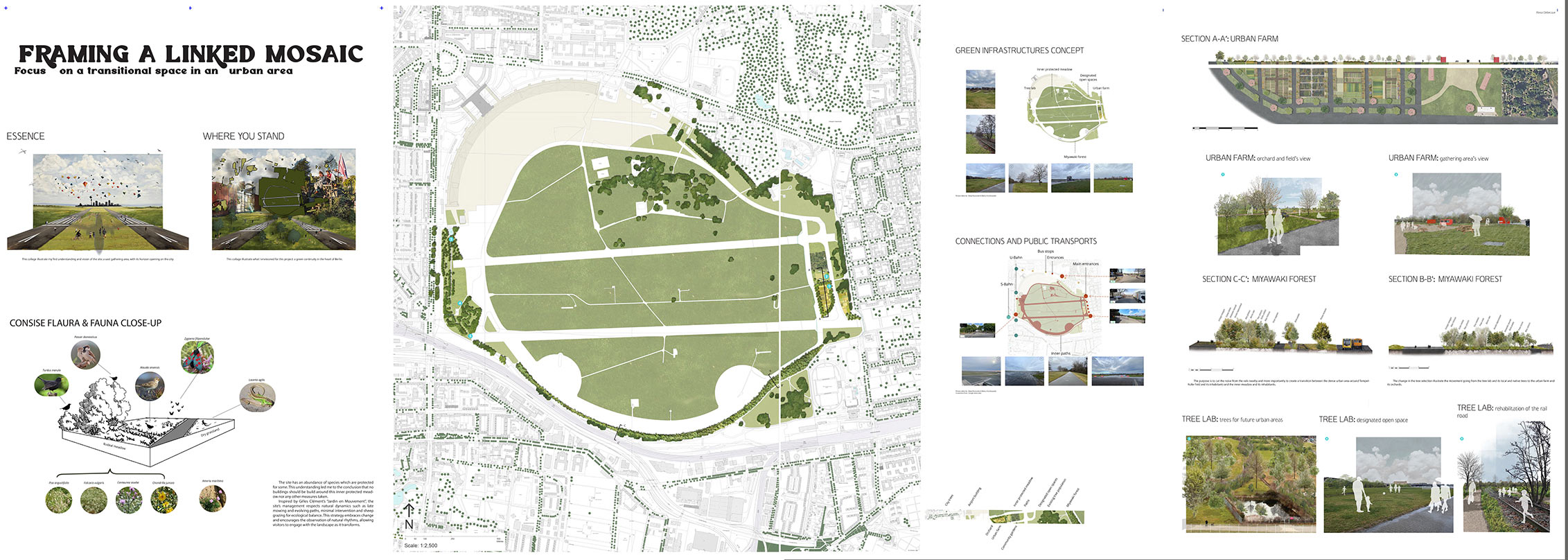

Alexia Delbecque
Framing a linked Mosaic
This project envisions the preservation of one of the world’s largest urban green spaces — a site that is at once symbolic, functional, and ecological. It is a place of memory, both historical and emotional, rooted in Berlin’s collective past while serving as a laboratory for its sustainable future. Its vastness opens on the horizon, giving strong visual and physical connections across the site, and its unique openness fosters unusual acoustic qualities, as noted by composer Lisa Bielawa (“you can hear a dog or child from 300 meters”), creating a sensory experience. Contrary to the view that keeping such a vast open space is a luxury, this proposal argues it is, in fact, a vital necessity for the city as it is part of a green urban space.
In the east, next to the community gardens, lies a community-based urban farm that offers gardens and orchards, experimental planting zones and educational programs (1)iii. Designed especially with nearby lower-income neighbourhoods in mind, this area fosters social ties and ecological learning, emphasising low-impact farming and circular economy principles over productivity (section A-A’). For some, it’s the only garden they can afford.
Adjacent to it resides an urban woodland. This design is inspired by Miyawaki's methods and integrates research, observation, and participation in planting native species of trees (section B-B’ & C-C’). This tree line would naturally reduce noise pollution from outside the site, create ecological corridors for birds, insects, and small animals, framing that space where nature, people, and time coexist, as well as creating more shaded areas.
In the continuity of the Urban farm (east) and the Miyawaki forest (south), a Tree Laboratory, featuring indigenous species (3) and climate-resilient trees (5). This western area acts as both an urban ecosystem and an educational tool, raising awareness about biodiversity, climate adaptation in urban areas, and future forestry strategies. These planted areas wouldn’t take away the designated open spaces, made for leisure, recreation and activities (4).
This site should remain free from housing development because it holds immeasurable ecological and social values. Other areas in Berlin are better suited for construction, as shown in official planning documents. The project avoids new permanent buildings. Instead, it proposes renovation of existing structures, why not recycled containers for services (e.g. restoration areas, garden sheds (2) ), and benches.
The landscape forms a mosaic of green areas, acting as a transition between dense urban fabric and protected inner meadows, linked by the multiple entrances and paths that connect it all.